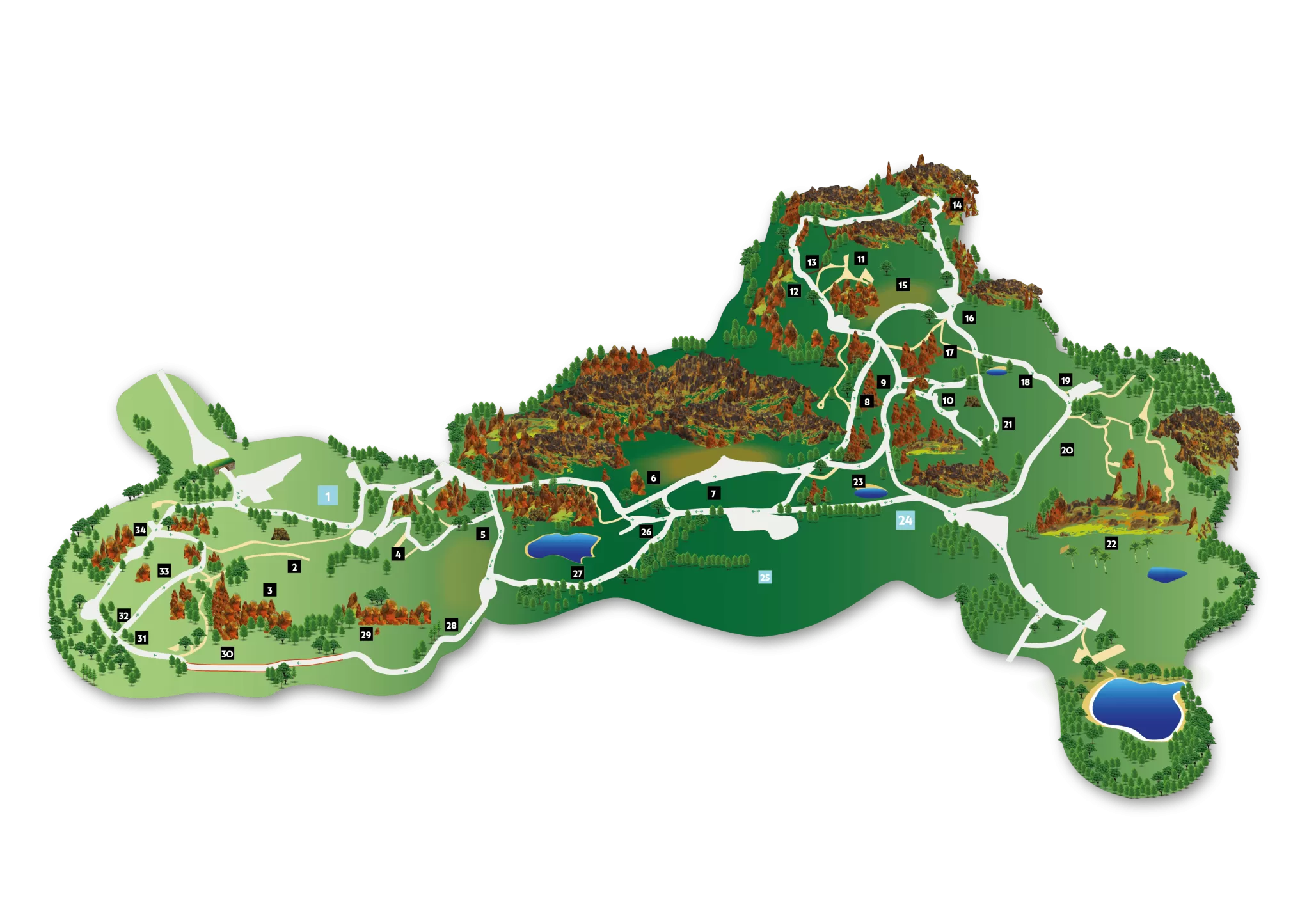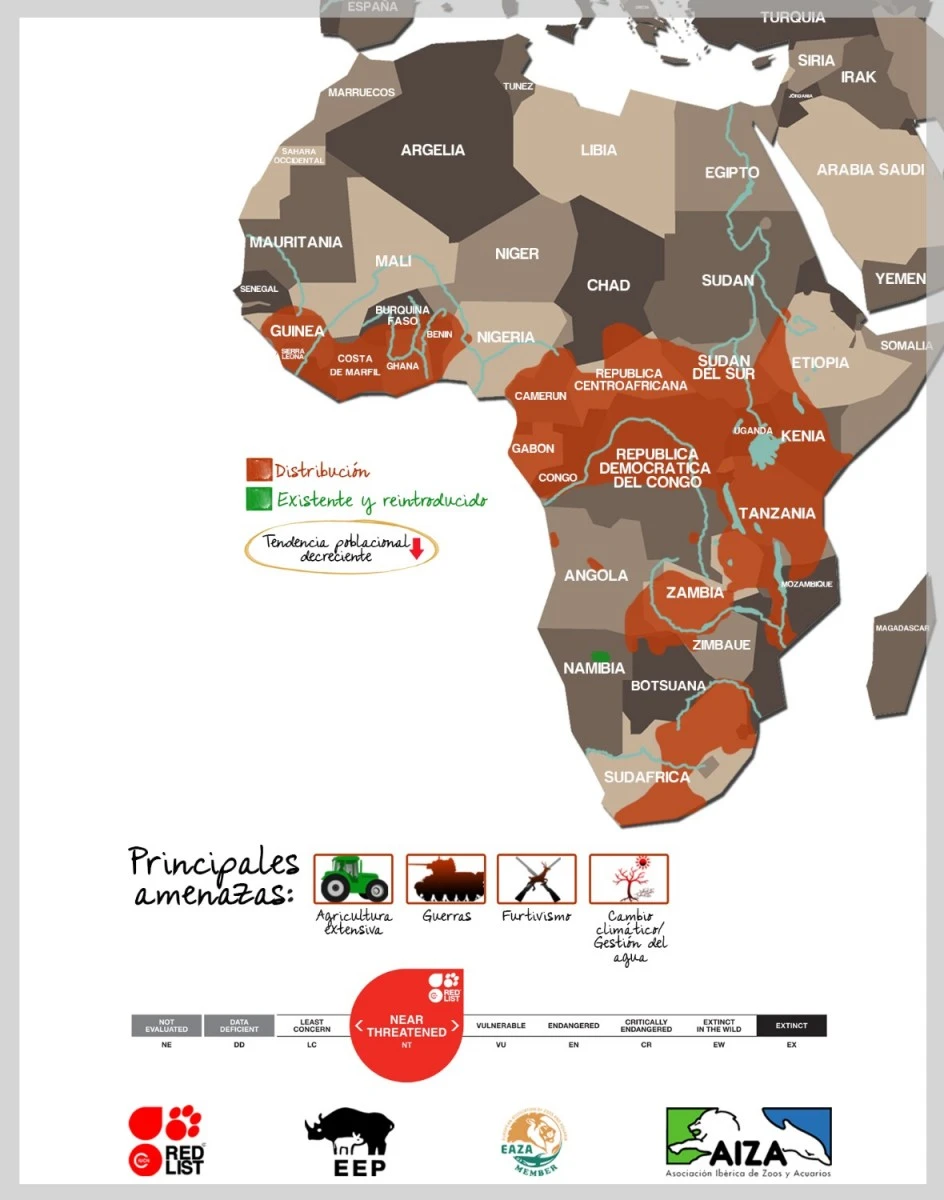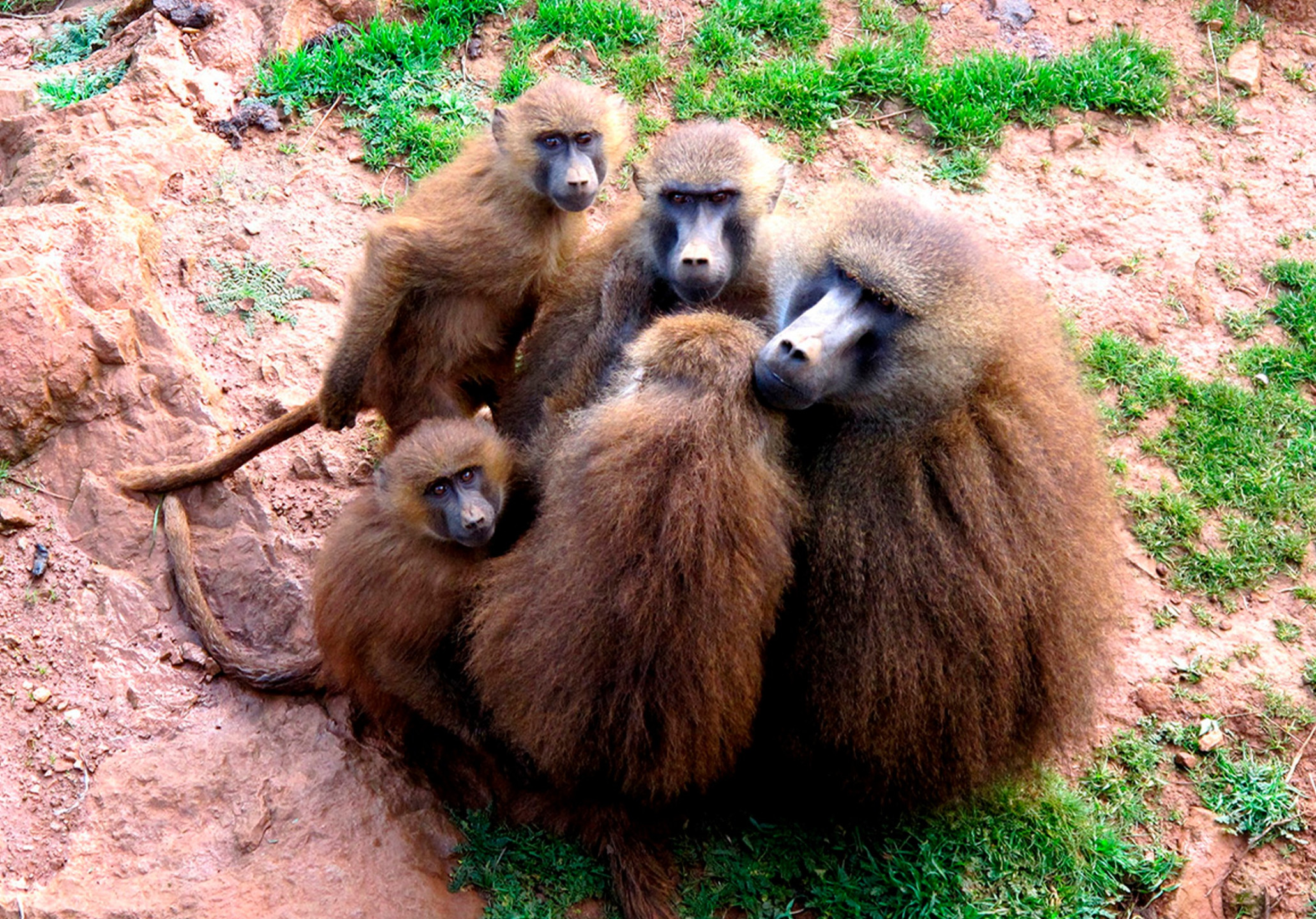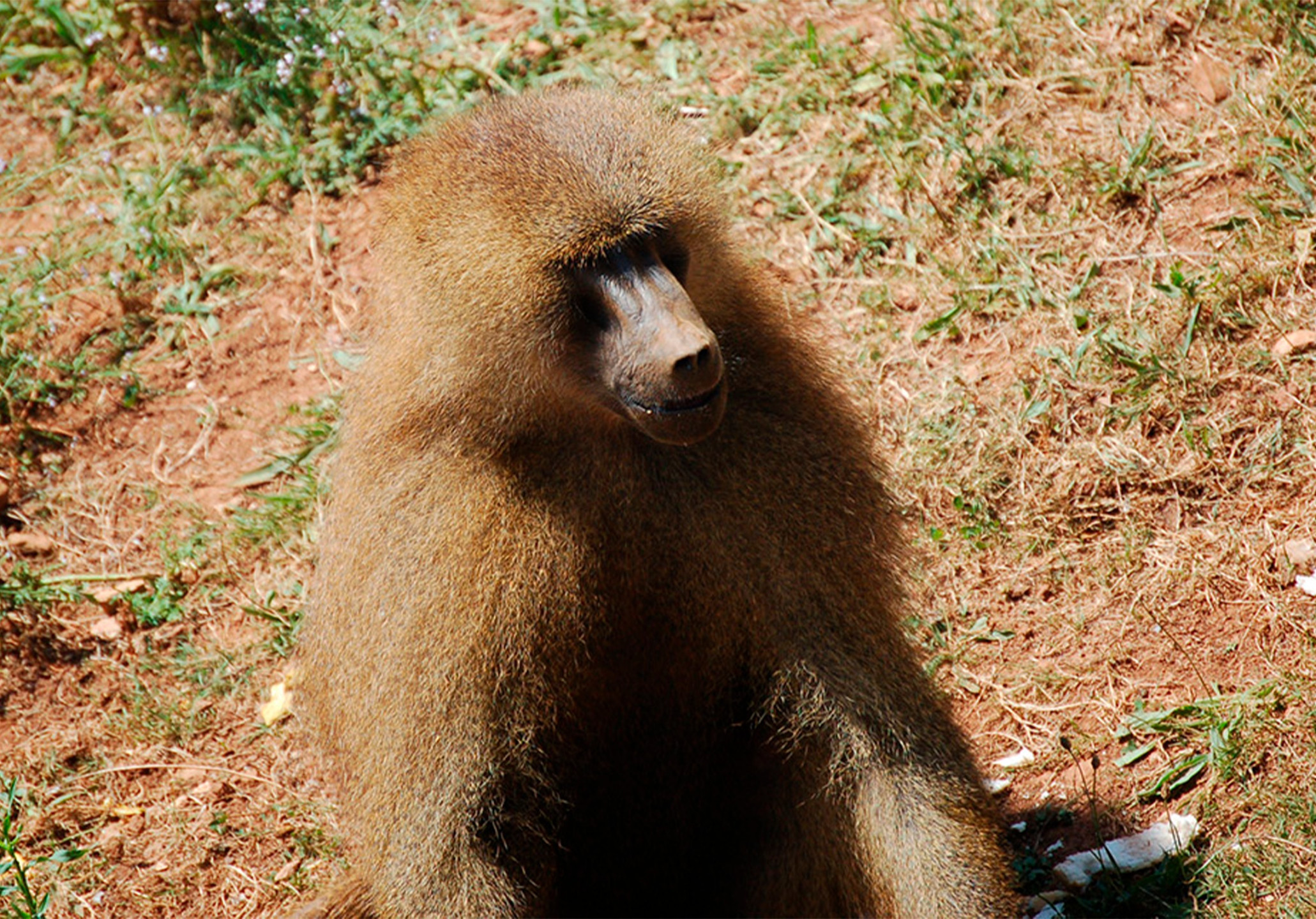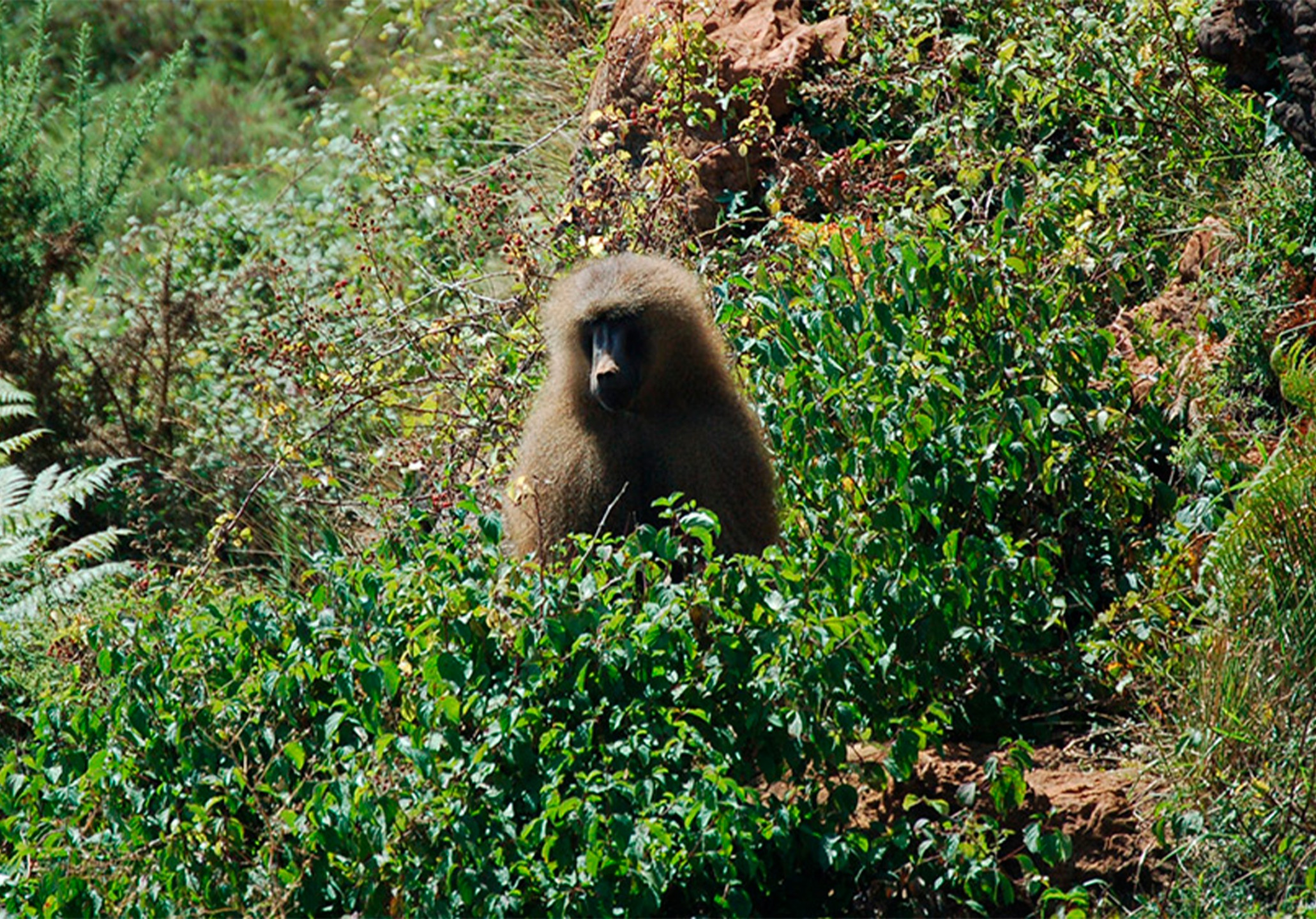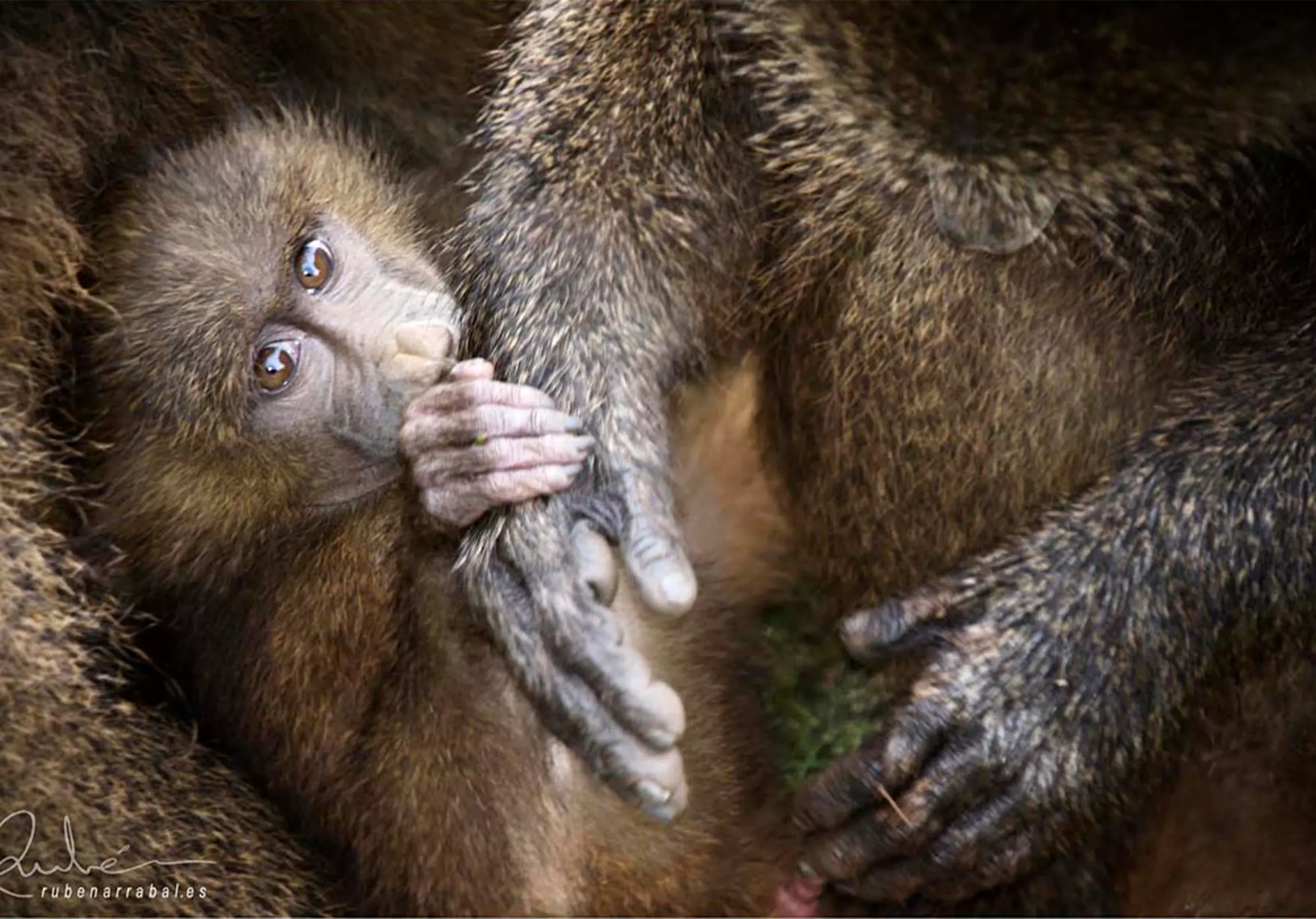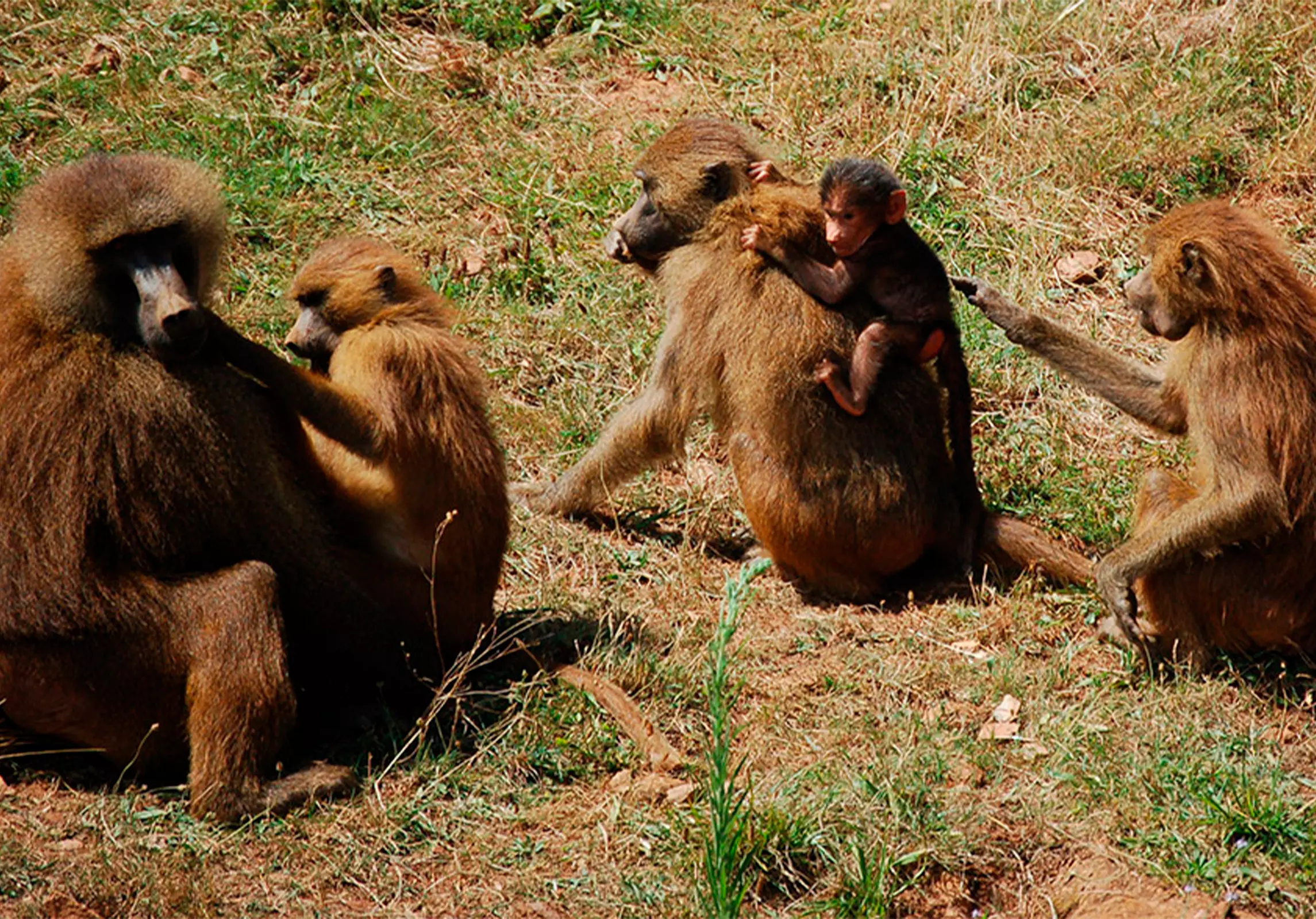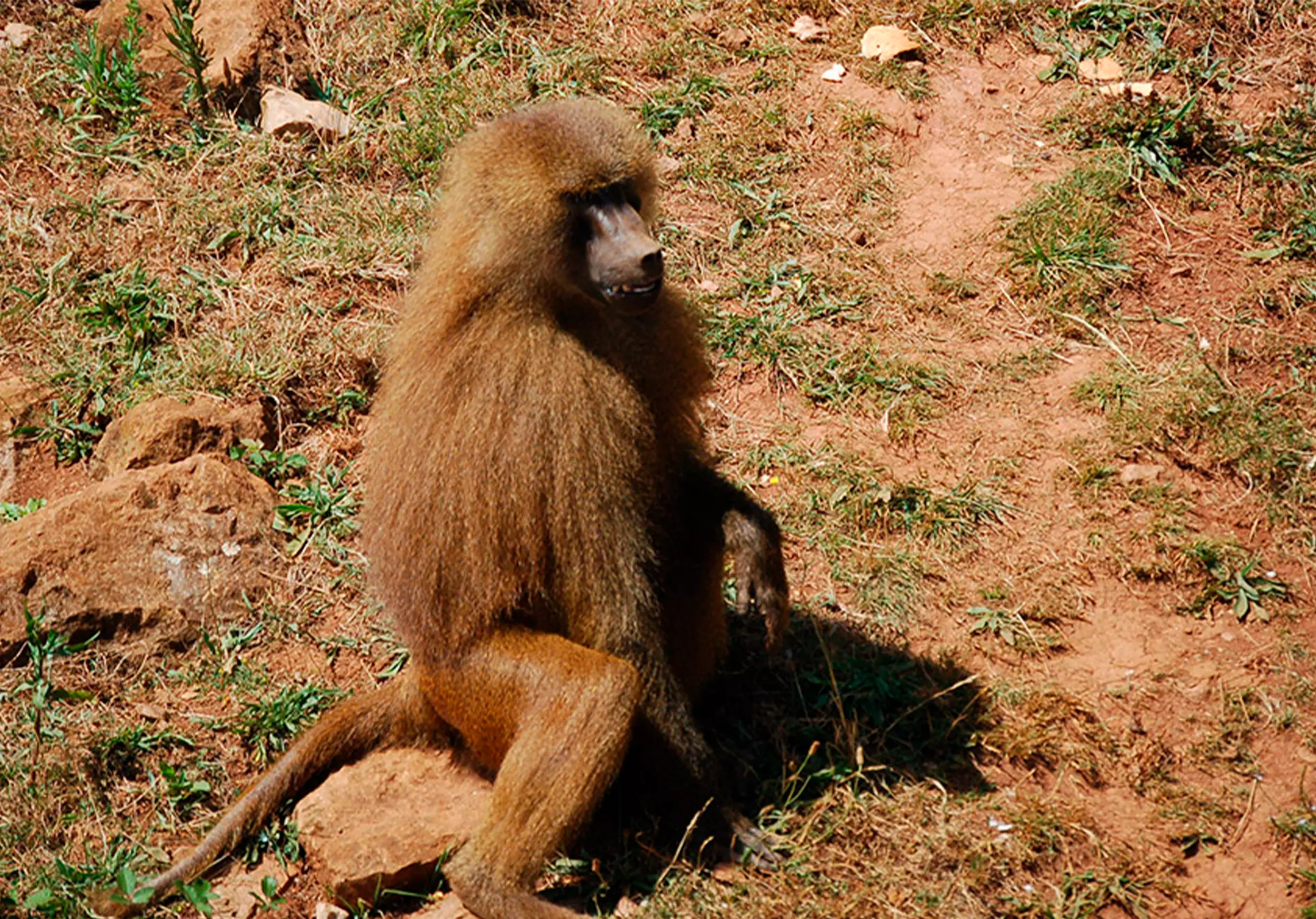
The Guinea baboon lives on the ground of the African savanna, although it climbs trees to sleep. They form complex and strongly hierarchical societies of more than 30 individuals, sometimes reaching 150. Their social organization is based on a network of dominance: at the highest position are the adult males, who sleep on the most comfortable branches and with the most food; followed by the immature males, who cannot approach females unless they are outside the estrus period; and then the females, who occupy the lowest position and among whom there is also a very well-defined hierarchy.
The baboon group lives in fixed territories, the ownership of which is transmitted from generation to generation, and from which they rarely venture out. Success in defending against their predators is due to their perfect knowledge of their territory.
They spend a lot of their time mutually grooming (delousing). These contacts reinforce the social cohesion of the group, with adult males and females with young receiving the most attention.
Their natural enemies are large eagles, leopards, cheetahs, lions, hyenas, African wild dogs, jackals, etc., although these primates have a sophisticated defense system based on continuous vigilance.
The baboon, in ancient Egypt, was considered a sacred animal, and as such was profusely represented and mummified.
Although this species remains abundant in the wild, the continuous transformation of its natural habitats to feed an ever-growing human population is beginning to cause them survival problems.

